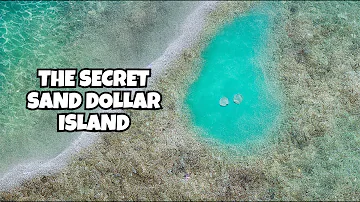Where are sand dollars found?
Sand dollars are found throughout the global ocean, most commonly in shallower coastal waters, though some species do live further offshore. One species of sand dollar, Clypeaster subdepressus, is common along the Pacific and Atlantic coasts of the Americas and throughout the Pacific Islands.
Where are you most likely to find a sand dollar?
Finding Sand Dollars
Beachcombers are most likely to find sand dollars in the morning at low tide, especially after a storm. When searching pay close attention to the area just below the high-tide line and look for round patches or depressions in the sand; these may turn out to be sand dollars on closer inspection.

Where is the best beach to find sand dollars?
Where you specifically want to go are the two best beaches on Sanibel Island for sand dollar hunting, and that is Bowman's Beach and Tarpon Bay Beach. The best places on the beaches are of course the shallows, specifically at low tide, and after a storm.
Are sand dollars hard to find?
Sand dollars aren't as easy to find as shells. They like to hide under the sand and don't always make it to shore. Try standing in shallow waters and shuffle your feet slowly into the wet sand. Perform this shell shuffle slowly enough that you don't mix the sand into the water, which will ruin your visibility.
Is it OK to collect sand dollars?
Sand dollars can't survive out of the water, so if you find a live one, put it gently back in the water. If you find a sand dollar on the beach, it is probably no longer alive and it is ok to take. Even sand dollars that look grey or tan in color are dead if they have no tiny coating of furry spines on them.
How much is a sand dollar worth?
How Much Is a Sand Dollar Worth? Because sand dollars are so prolific, they are very common. The cost of a live sand dollar for an aquarium might run between five and fifteen dollars. You can pick up a sand dollar skeleton at many local beach souvenir shops from anywhere from a dollar to five dollars.
What happens if you pick up a sand dollar?
You can touch a live sand dollar, but their long spines can cause puncture wounds that may become infected and result in a burning sensation. If you have picked one and it seems to move, it's best to gently return it to the water.
How rare are sand dollars?
The sand dollar is not currently listed as an endangered species.
How much is a full sand dollar worth?
How Much Is a Sand Dollar Worth? Because sand dollars are so prolific, they are very common. The cost of a live sand dollar for an aquarium might run between five and fifteen dollars.
Why you shouldn’t take sand dollars from the beach?
"Even after their death, the shells of sand dollars still provide a source of calcium carbonate for our oceans. As it can sometimes be difficult to determine whether or not a sand dollar is alive, it's always best to leave them where they were found."
Can you keep a sand dollar alive?
Sand dollars can't survive out of the water for more than a few minutes. If you find a live one, return it to its home by placing it gently on the sea floor, so it can continue to play its important role in Sanibel's ecosystem.
What is the biggest sand dollar ever found?
According to Guinness World Records, the largest sand dollar on record measures 5.826 inches at its smallest diameter. The maximum diameter is 6.299 inches.
What does finding a sand dollar mean?
Sand dollars can represent many things spiritually including choosing your own path, strength, flexibility, and freedom. Choosing your own path- sand dollars represent freedom and the ability to walk away from environments or people that are no longer working for you.
Is it illegal to take an alive sand dollar?
In most states, taking a living sand dollar from the beach is illegal. However, laws vary about collecting a dead one. It's best to check for signs at the beach, look at your state laws online or ask a lifeguard or warden working at the beach.
How much money is a full sand dollar worth?
How Much Is a Sand Dollar Worth? Because sand dollars are so prolific, they are very common. The cost of a live sand dollar for an aquarium might run between five and fifteen dollars. You can pick up a sand dollar skeleton at many local beach souvenir shops from anywhere from a dollar to five dollars.
What lives inside a sand dollar?
When these spines bunch up into tiny triangular-shaped cones, they mark a spot where captive amphipods or crab larvae are being held for transport to the sand dollar's mouth. Unlike sea stars that use tube feet for locomotion, a sand dollar uses its spines to move along the sand, or to drive edgewise into the sand.
Is it OK to touch a live sand dollar?
Can you touch a live sand dollar? You can touch a live sand dollar, but their long spines can cause puncture wounds that may become infected and result in a burning sensation. If you have picked one and it seems to move, it's best to gently return it to the water.


